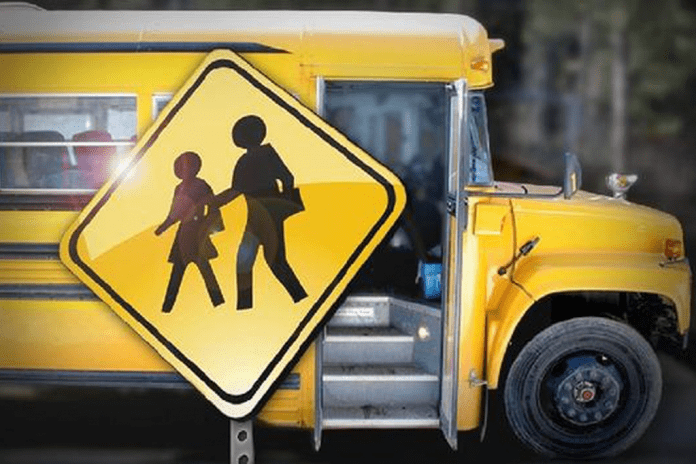My, how things in pupil transportation have changed over the last two years. Would you have imagined school bus drivers taking sack lunches to kids, parking school buses with Wi-Fi, so that kids could use the school supplied computers, or buses transporting only 11 students per route?
On the other hand, much has not changed the past 50 years. Pupil transportation professionals consistently state that their primary mission is to provide the safest transportation of students to and from school.
Now, we have exterior cameras on buses, so we can document incidents of drivers running the flashing red lights. But what have we really gained? Are you aware that the school bus kills more children than passing motorists? We are able to provide the courts and police with evidence, but even in instances where counties have instituted a fine for the infraction, the town receives 10 percent of the revenues and the county receives 90 percent, as is the case in Suffolk County, New York. Cameras on the bus make money for towns, municipalities and for camera contractors, but do they make kids safer? The unfortunate answer is no.
Related: Michigan Bill Authorizes Use of School Bus Stop-Arm Cameras
Related: School Bus Stop Safety Begins and Ends With Training
Related: School Bus Illegal Passing Legislation Catches Second Wind in Congress
Since 1970, national statistics compiled by the Kansas State Department of Education’s Transportation Section consistently report increasing numbers of children and pedestrians killed or injured outside the bus. As a side note, these “official” numbers are derived from voluntary state self-reporting. Although statistics from the most recent years are not yet officially compiled, the numbers of incidents reported on the news wires and online articles are grim.
For the last three years, 43 children were killed and 175 were injured by or around their own school bus and passing drivers, according to data I have compiled.
- 2018-2019: 16 killed, 69 injured
- 2019-2020: 18 Killed, 79 injured
- 2020-2021: 9 killed, 27 injured
Significantly, for two of these three years there were fewer schools open, fewer students transported and fewer buses on the roads. The majority of student fatalities and injuries occur during loading and unloading. Yet children, some as young as 5 years old, are required to cross multi-lane roads to reach their buses because a right-hand stop is not “convenient.”
Now what about those cameras? Are there fewer drivers passing school bus red lights? Perhaps, but that data is only anecdotal. Perhaps more drivers are being fined, but statistics show that the cameras haven’t made the children safer.
Children, especially the youngest ones, do not possess the ability to judge a vehicle’s size, distance or speed, making them especially vulnerable in traffic (“Children in Traffic” American Automobile Association video.) Since 1930, only one state—California—requires the school bus driver to cross students at a stop and has had no fatalities or injuries at bus stops. Meanwhile, 49 other states pile up reasons why they can’t accomplish the same thing.
During these same three years, 2019 through half of 2021, 45 children were left on empty buses. In eight instances, the bus had both a driver and an aide on board. In one case, there were two aides. In a separate incident, a driver and two aides left a wheelchair-bound student, twice. Are you outraged or at least uncomfortable yet? Given the lack of corrective action taken over many years, maybe the unfortunate answer is no.
During these same three years, there were 57 bus fires. One student and driver died, and the industry saw at least 273 rear-end collisions resulting in 20 fatalities to passengers of vehicles that under rode the bus. There were 320 injuries on the school bus.
Related: 7-Year-Old Kansas Student Killed in Illegal School Bus Passing Incident
Related: Student Transportation Leader Evacuates 12 Students After School Bus Catches Fire
Related: Alabama Student Hit, Injured by Motorist While Boarding School Bus
Given these statistics and the primary stated mission of the industry, today the most important issue seems to be the replacement of diesel buses with electric. Why? Is it because it is easier to sit back and accept “free” federal money than to tackle the long-standing safety issues in the industry? Of all the currently proposed legislation to invest billions of dollars in electric buses, the majority of money will go to mass transit not school buses. A child on an electric bus is not safer if issues surrounding placement of school bus stops, safer routing and more comprehensive driver training are not implemented.
The primary mission of the pupil transportation industry is the safe transport of children to and from school. Is the child on an electric bus safer? The unfortunate answer is no.
Editor’s Note: As reprinted in the July 2021 issue of School Transportation News.
 Richard “Dick” Fischer is the owner of Trans-Consult World-Wide Consult Service. He has logged 64 years in pupil transportation as a director of transportation, driver trainer and publisher. In 1972, he successfully petitioned President Richard Nixon to establish the first National School Bus Safety week. Subscribe to his free school bus safety newsletter by emailing dfischer@ix.netcom.com.
Richard “Dick” Fischer is the owner of Trans-Consult World-Wide Consult Service. He has logged 64 years in pupil transportation as a director of transportation, driver trainer and publisher. In 1972, he successfully petitioned President Richard Nixon to establish the first National School Bus Safety week. Subscribe to his free school bus safety newsletter by emailing dfischer@ix.netcom.com.
















